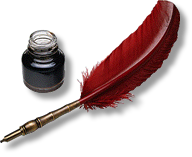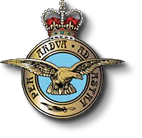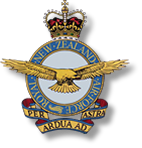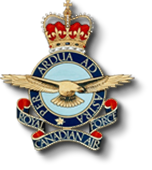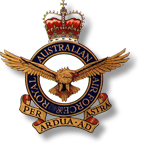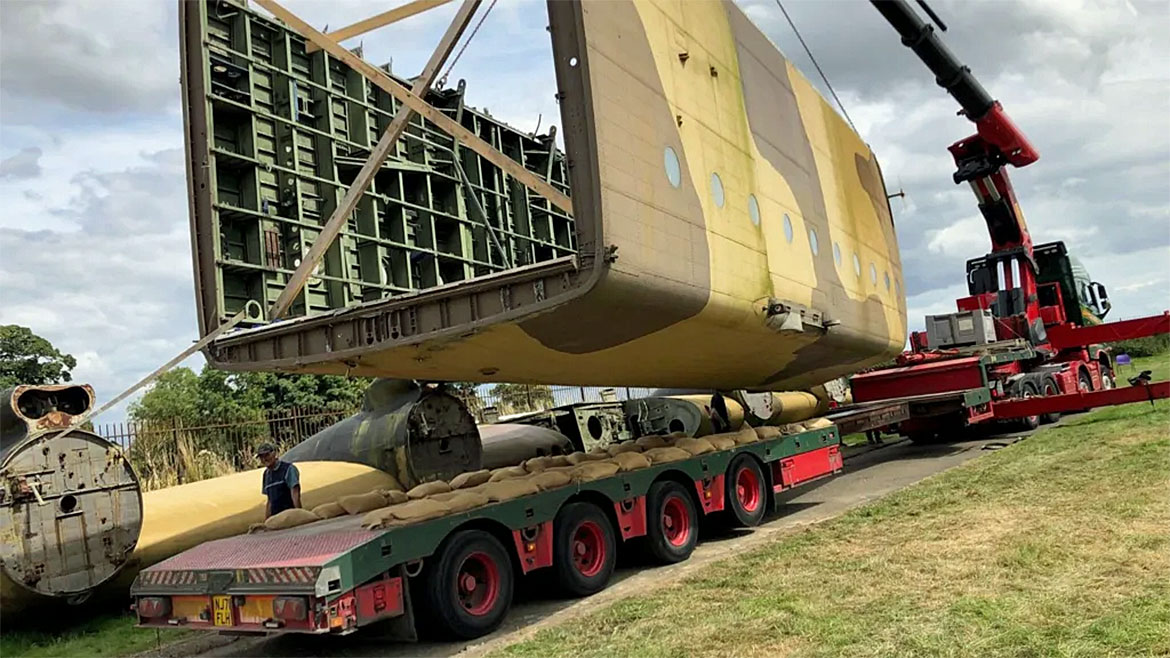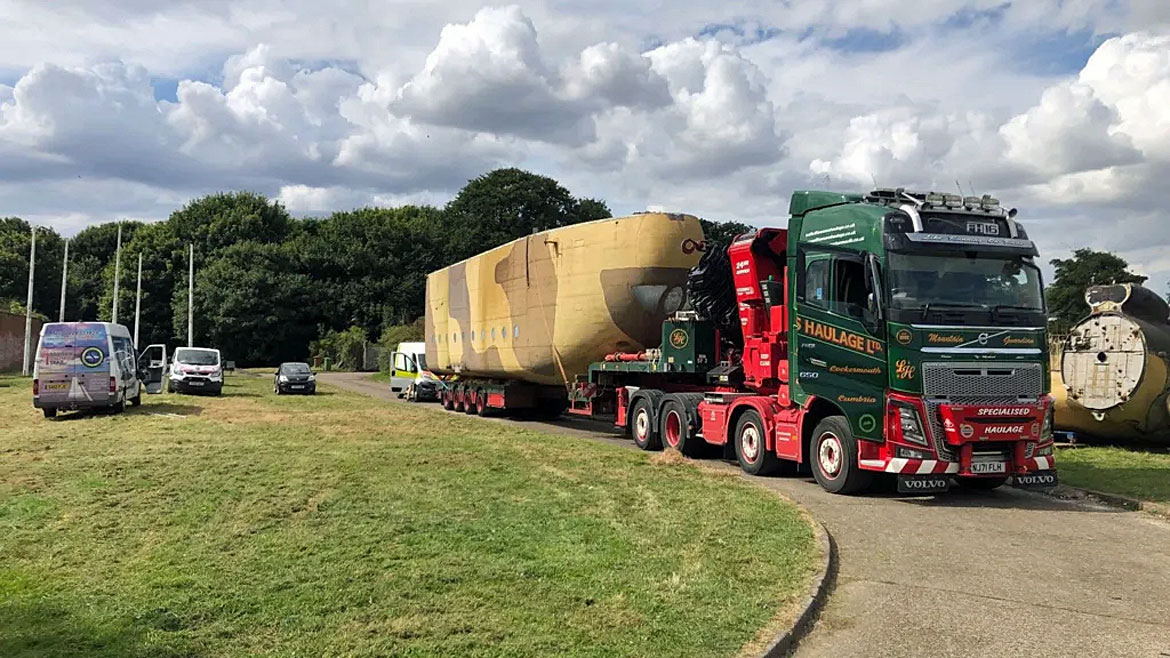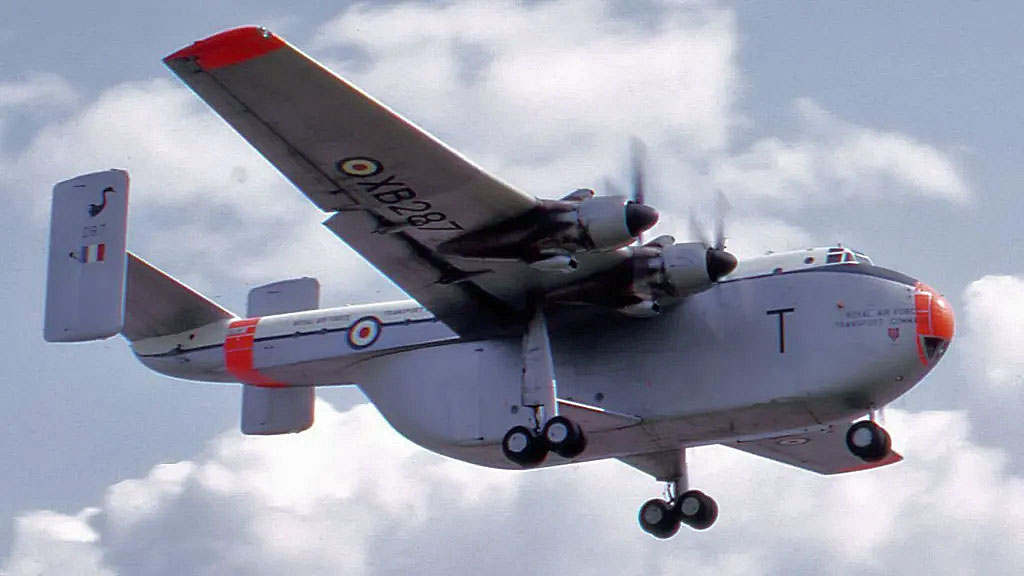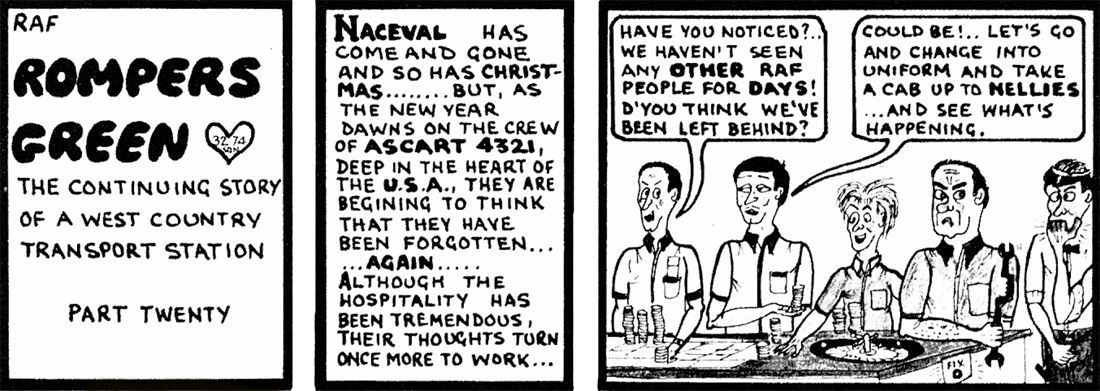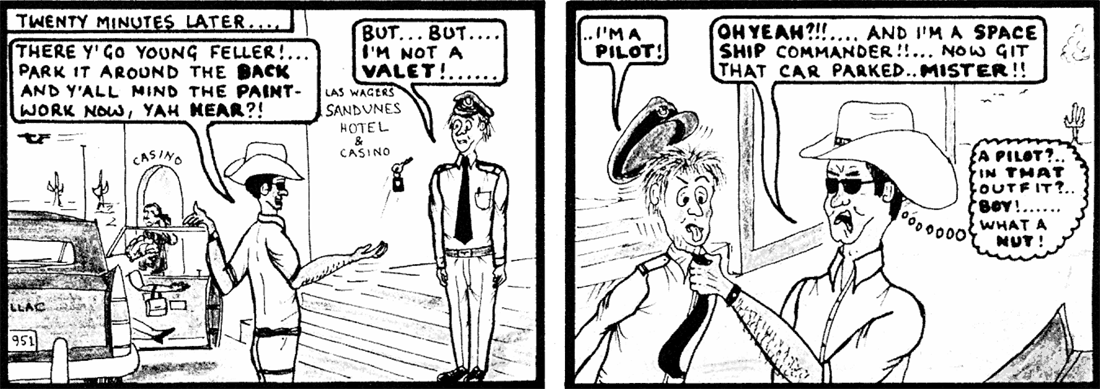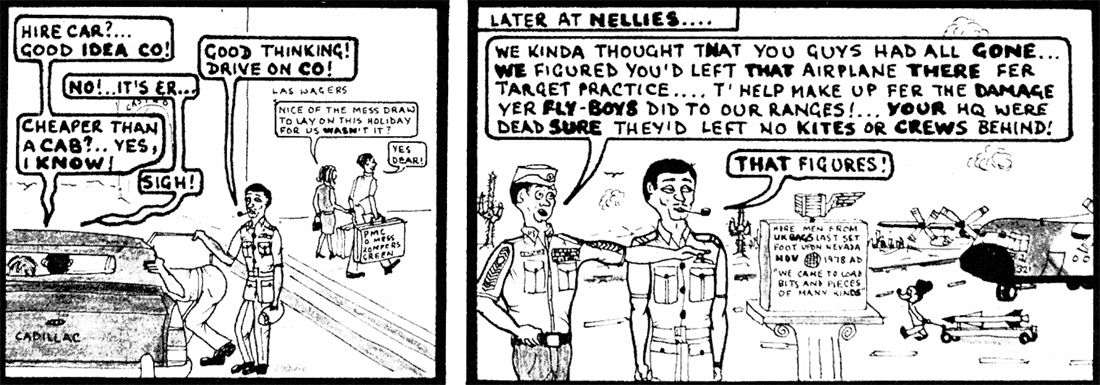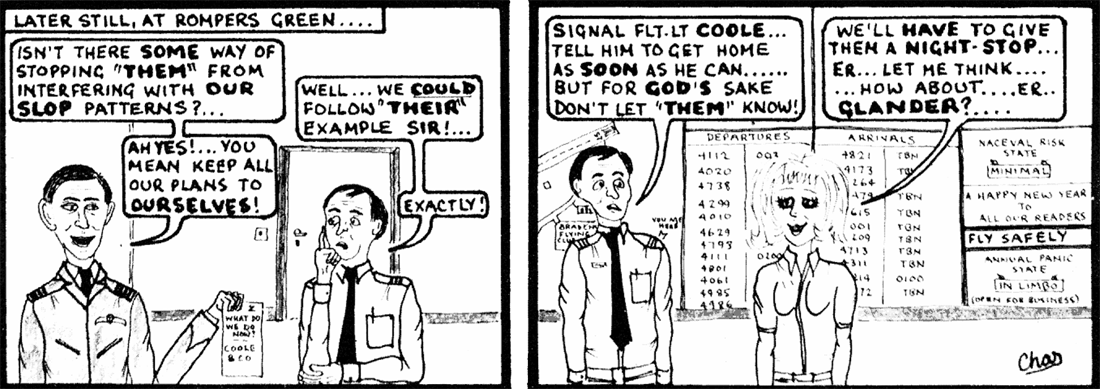



Touchdown! RAF aircraft arrive in Australia ready for Exercise Pitch Black
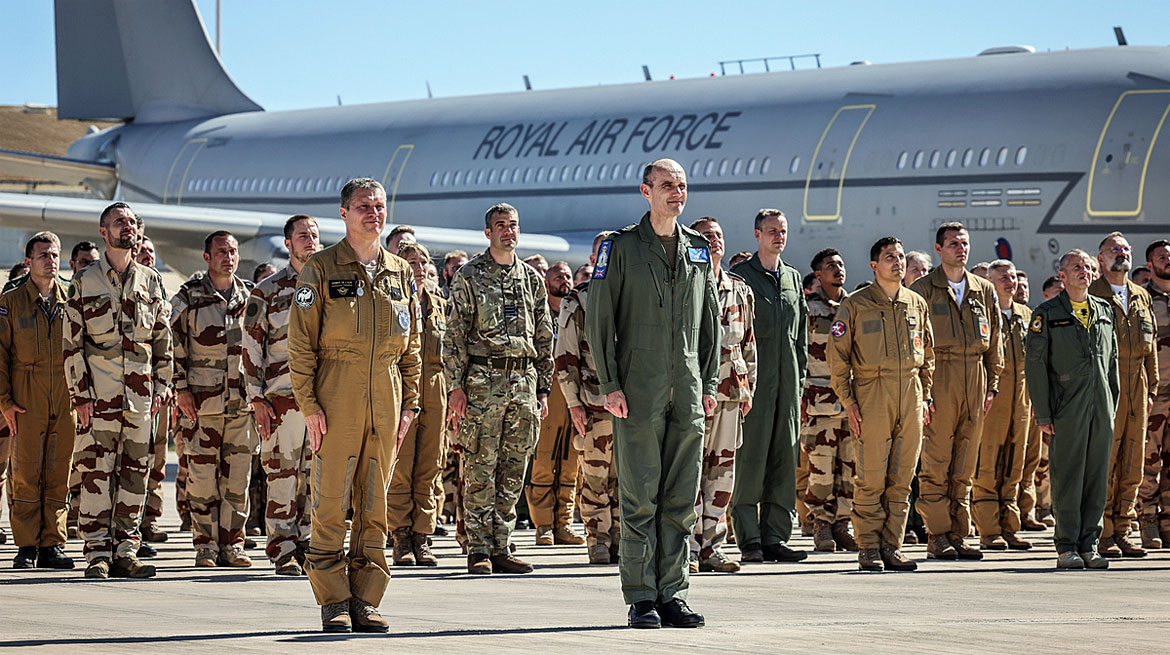
French Air Force and RAF personnel formed up
Royal Air Force Typhoons and a Voyager, together with an Atlas, have arrived in Darwin, Australia, ready to begin Exercise Pitch Black. To get there, the RAF deployed as a joint exercise with the French Air and Space Force (FASF).
The deployment phase of this series of exercises was known as Exercise Griffin Strike 24. Six Typhoons from RAF Coningsby based 11 (Fighter) Squadron with the Voyager, and A400M aircraft from the RAF Brize Norton based Air Mobility Force, first joined up with FASF’s Rafale and Phenix aircraft at Istres Airbase in southern France.
The deployment exercise began on the 4th July 2024 and is intended as a demonstration of the UK’s commitment to deploy a persistent, credible, and reliable presence in the Indo-Pacific region when needed. This deployment in 2024 marks a significant period in the UK and French relationship marking the 120th anniversary of the Entente Cordiale.
The deployment to Darwin has seen the combined air group fly from France to the Middle East, then on to Singapore before finally travelling to Australia so that both detachments can participate in Exercise Pitch Black 24. During the exercise the combined air detachment travelled nearly 9,000 miles in order to complete the mission and provided vital training for both the RAF and FASF both individually and as a collective.
mod.uk
The deployment phase of this series of exercises was known as Exercise Griffin Strike 24. Six Typhoons from RAF Coningsby based 11 (Fighter) Squadron with the Voyager, and A400M aircraft from the RAF Brize Norton based Air Mobility Force, first joined up with FASF’s Rafale and Phenix aircraft at Istres Airbase in southern France.
The deployment exercise began on the 4th July 2024 and is intended as a demonstration of the UK’s commitment to deploy a persistent, credible, and reliable presence in the Indo-Pacific region when needed. This deployment in 2024 marks a significant period in the UK and French relationship marking the 120th anniversary of the Entente Cordiale.
The deployment to Darwin has seen the combined air group fly from France to the Middle East, then on to Singapore before finally travelling to Australia so that both detachments can participate in Exercise Pitch Black 24. During the exercise the combined air detachment travelled nearly 9,000 miles in order to complete the mission and provided vital training for both the RAF and FASF both individually and as a collective.
mod.uk
July 16, 2024 - This year is the largest iteration of the exercise in its 43-year history, with 20 participating nations bringing 140 aircraft and 4500 personnel across northern Australia. This includes the first time participation of Spain, Italy, Papua New Guinea, Fiji, Brunei and the Philippines, as well as the first time involvement of an aircraft carrier; the Italian Navy ‘Cavour’.
This large-scale multi-national training activity includes combat aircraft flying offensive counter-air, air interdiction and strike missions with air-to-air refuelling, intelligence surveillance and reconnaissance, electronic attack and airlift support.
Flying for the activity began on July 15, with aircraft operating from RAAF Bases Darwin, Tindal, Amberley and Curtin.
airandspaceforces.com
This large-scale multi-national training activity includes combat aircraft flying offensive counter-air, air interdiction and strike missions with air-to-air refuelling, intelligence surveillance and reconnaissance, electronic attack and airlift support.
Flying for the activity began on July 15, with aircraft operating from RAAF Bases Darwin, Tindal, Amberley and Curtin.
airandspaceforces.com
Fighters from Around the World Join in on Massive Exercise in Australia

From: Stephen Smith, Reading, Berkshire
Subject: My Most Satisfying Task
Hi Tony,
Many thanks for your sterling efforts in keeping us all up to date with ‘news’. I can’t say with any confidence that I participated in any memorable tasks in mainstream movements but my most satisfying task was in August 1985. I was in the Load Handling Section of 240 OCU at RAF Odiham. The squadron families day and summer party was imminent – in 2 days. Wg Cdr R Hill was OC 240 OCU and he tasked me for the next day to travel onboard a Chinook for a day trip to Gütersloh to collect ‘supplies’ for the party.
Subject: My Most Satisfying Task
Hi Tony,
Many thanks for your sterling efforts in keeping us all up to date with ‘news’. I can’t say with any confidence that I participated in any memorable tasks in mainstream movements but my most satisfying task was in August 1985. I was in the Load Handling Section of 240 OCU at RAF Odiham. The squadron families day and summer party was imminent – in 2 days. Wg Cdr R Hill was OC 240 OCU and he tasked me for the next day to travel onboard a Chinook for a day trip to Gütersloh to collect ‘supplies’ for the party.
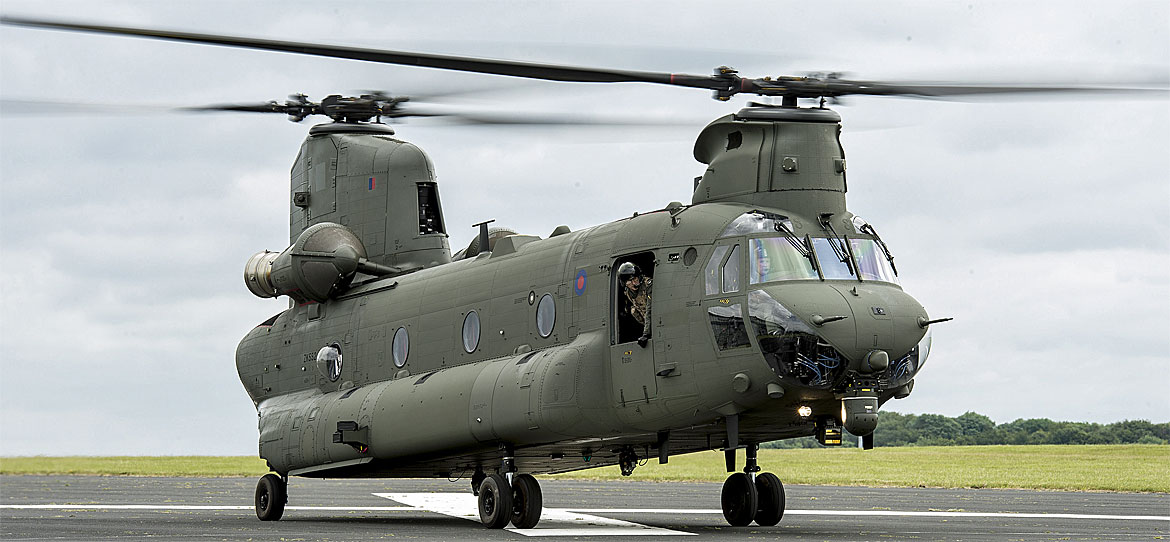
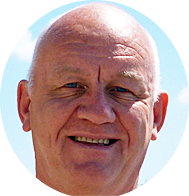
A Chinook - ready for lift-off from Odiham
An early departure the next day saw us leave Odiham for a single hop straight to Gütersloh. The aircraft was captained by an Aussie exchange pilot, Flt Lt Phil Carkagis, with a co-pilot and 2 loadies. The only other persons who were onboard was the squadron SENGO, who had the purse strings, a ground engineer and myself. No middle seats were installed in the aircraft and the majority of the side seats were folded.
18 Squadron hosted our arrival and arranged transport for us to visit an off-base establishment to get a variety of liquid supplies. Myself and one of the loadies offloaded the truck and loaded the aircraft. Crates of Grolsch, Warsteiner, and boxes of wine were stacked pretty much along the whole floor of the aircraft, covered with camouflage netting and firmly restrained using 10K nets.
We departed Gütersloh at MAUW for a Chinook with the intention of a direct flight back to Odiham. Fate though, conspired against that and we had to land at Manston to resolve an issue with the number 2 engine. Having arrived from Germany, HMRC pitched up to the aircraft to undertake a spot inspection. The customs officer was suitably impressed at the restraint and camouflage that we used on what we told him was Top Secret material. He wished us a good time at the party and allowed us on our way!
Engine 2 was fixed quite quickly and we resumed our journey back to Odiham. The families days went off smoothly and the party that evening continued into the early hours.
Keep up the good work Tony.
Many thanks
Steve
18 Squadron hosted our arrival and arranged transport for us to visit an off-base establishment to get a variety of liquid supplies. Myself and one of the loadies offloaded the truck and loaded the aircraft. Crates of Grolsch, Warsteiner, and boxes of wine were stacked pretty much along the whole floor of the aircraft, covered with camouflage netting and firmly restrained using 10K nets.
We departed Gütersloh at MAUW for a Chinook with the intention of a direct flight back to Odiham. Fate though, conspired against that and we had to land at Manston to resolve an issue with the number 2 engine. Having arrived from Germany, HMRC pitched up to the aircraft to undertake a spot inspection. The customs officer was suitably impressed at the restraint and camouflage that we used on what we told him was Top Secret material. He wished us a good time at the party and allowed us on our way!
Engine 2 was fixed quite quickly and we resumed our journey back to Odiham. The families days went off smoothly and the party that evening continued into the early hours.
Keep up the good work Tony.
Many thanks
Steve

From: Chris Wootten, Bowen, QLD
Subject: My Most Satisfying Task
Tony,
Australia Day 1998. I was awoken by my wife at 5am to say the road to Katherine was flooded and could she borrow my Landi as her Nimbus was too low to get through. Camille had to start work at Woolies.
Not long after, I got a call to go to work asap at AMS Tindal. The RAAF base is 20 km from Katherine, and lies 50ft higher geographically. There had been an enormous amount of rain falling at the headwaters of the Katherine River. Camille did not get through to work. The river was rising rapidly. The base personnel were recalled and we went to work. Katherine has its own power plant and was in danger of being flooded; if this happened we would be out of power for some time. The base at Tindal has its own generators.
Subject: My Most Satisfying Task
Tony,
Australia Day 1998. I was awoken by my wife at 5am to say the road to Katherine was flooded and could she borrow my Landi as her Nimbus was too low to get through. Camille had to start work at Woolies.
Not long after, I got a call to go to work asap at AMS Tindal. The RAAF base is 20 km from Katherine, and lies 50ft higher geographically. There had been an enormous amount of rain falling at the headwaters of the Katherine River. Camille did not get through to work. The river was rising rapidly. The base personnel were recalled and we went to work. Katherine has its own power plant and was in danger of being flooded; if this happened we would be out of power for some time. The base at Tindal has its own generators.
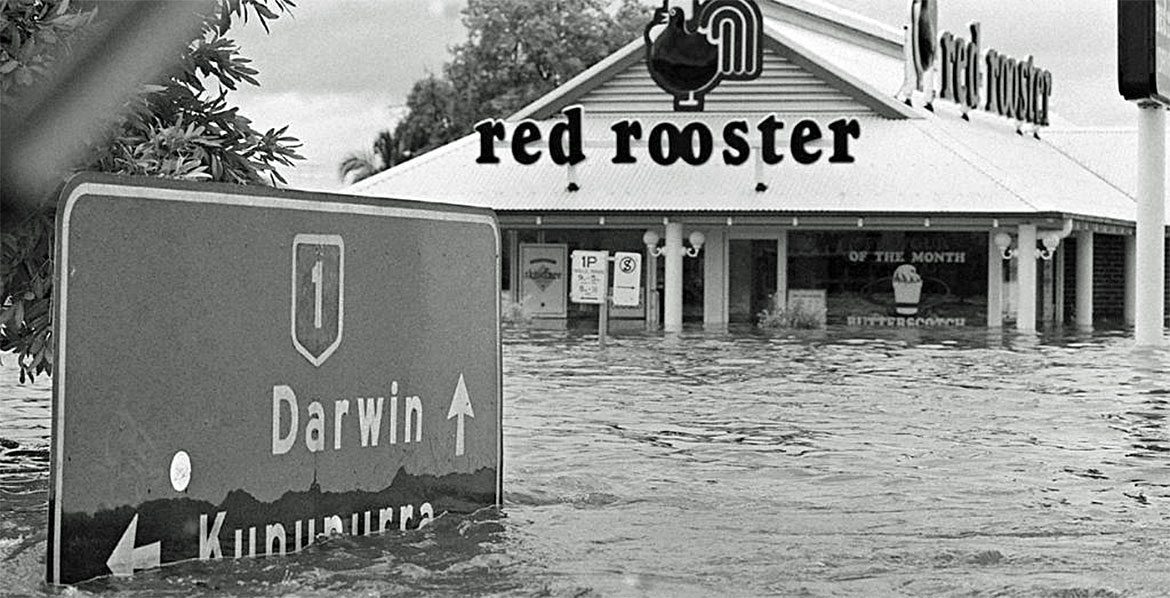

The river kept rising and the town went under water. In the following days, the 3 hospitals' patients were evacuated by mustering choppers to the hospital on base. Personnel living in town helped out there and on-base personnel prepared as best we could. We were cut-off from Darwin and they were cut-off from down south.
There was need for help and we were sent 2 C130s. I was the MVSCLK and handled many movements of civilians out, food and requisite material inbound. Northbound road trains of foodstuffs were commandeered and the items distributed as all the town's shops went under water - there was no food left on the shelves.
Over the coming days, RAAF people worked tirelessly to help in many ways. Dressed in Disruptive Pattern Camouflage Uniform (DPCU) was easiest under these conditions. Of course the Army got all the credit.
Being there and being able to help under these conditions, doing my job, was very satisfying.
Chris
There was need for help and we were sent 2 C130s. I was the MVSCLK and handled many movements of civilians out, food and requisite material inbound. Northbound road trains of foodstuffs were commandeered and the items distributed as all the town's shops went under water - there was no food left on the shelves.
Over the coming days, RAAF people worked tirelessly to help in many ways. Dressed in Disruptive Pattern Camouflage Uniform (DPCU) was easiest under these conditions. Of course the Army got all the credit.
Being there and being able to help under these conditions, doing my job, was very satisfying.
Chris
Two massive wings are to be flown from Scotland to Ontario aboard a Royal Canadian Air Force (RCAF) aircraft later this month as part of a Nanton air museum project to eventually display a completed Halifax bomber in its hangar.
Karl Kjarsgaard, the Bomber Command Museum of Canada director heading up the project, said he located both wings in England while on a quest to find more parts for a Halifax, the bomber most used by Canadian airmen during the Second World War. "The Yorkshire Air Museum, which has a Halifax, had a spare wing in the back of its hangar, and the RAF Museum had a wing in a storage hangar", said Kjarsgaard. "People didn’t know they were there, and I found them.”
The Bomber Command Museum is making 12 1.8-metre Halifax propeller blades for the Yorkshire Air Museum in exchange for the wing, and the RAF Museum donated the other wing.
The two outer wings, which measure roughly 7.6 metres by three metres, tapering down to 1.8 metres at the wing tip, are now at the RCAF detachment in Prestwick, Scotland, and are scheduled to arrive at CFB Trenton, Ont., on July 30.
Calgary Herald
Karl Kjarsgaard, the Bomber Command Museum of Canada director heading up the project, said he located both wings in England while on a quest to find more parts for a Halifax, the bomber most used by Canadian airmen during the Second World War. "The Yorkshire Air Museum, which has a Halifax, had a spare wing in the back of its hangar, and the RAF Museum had a wing in a storage hangar", said Kjarsgaard. "People didn’t know they were there, and I found them.”
The Bomber Command Museum is making 12 1.8-metre Halifax propeller blades for the Yorkshire Air Museum in exchange for the wing, and the RAF Museum donated the other wing.
The two outer wings, which measure roughly 7.6 metres by three metres, tapering down to 1.8 metres at the wing tip, are now at the RCAF detachment in Prestwick, Scotland, and are scheduled to arrive at CFB Trenton, Ont., on July 30.
Calgary Herald
One of the two wings at the RCAF detachment in Prestwick, Scotland, awaiting airlift to Canada.
Two Halifax bomber wings being flown to Canada for Nanton Museum
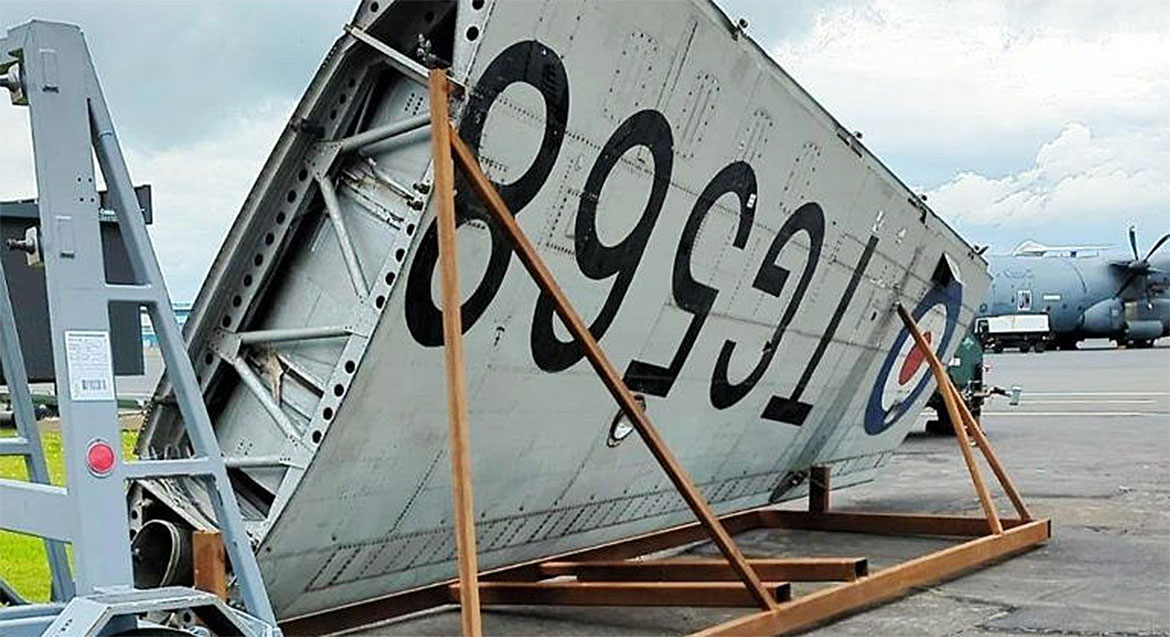

From: Barry Tappenden, Shortstown, Beds
Subject: My Most Satisfying Task
Good morning Tony,
One of the most satisfying tasks given to me was to rig a cross that was to be lifted onto the Hakka Methodist Church in Singapore.
I was tasked to ensure the cross was prepared correctly for a lift by helicopter and carry out the "hook" up. The structure was a very flimsy wood and bamboo construction with very little room to manoeuvrer. The "platform" to hook up was the cross's horizontal bar (enough to cater for my size 11's) and I was told the down draught could be a problem in the hook up! Everything went well, albeit the hook glanced off of my helmet; I did manage to hold on to the lightning conductor rod!
All praise should go to the pilot and crew because it was like threading a needle into the hole provided! Our reward was a slap up Chinese meal with all the trimmings supplied by the church.
Subject: My Most Satisfying Task
Good morning Tony,
One of the most satisfying tasks given to me was to rig a cross that was to be lifted onto the Hakka Methodist Church in Singapore.
I was tasked to ensure the cross was prepared correctly for a lift by helicopter and carry out the "hook" up. The structure was a very flimsy wood and bamboo construction with very little room to manoeuvrer. The "platform" to hook up was the cross's horizontal bar (enough to cater for my size 11's) and I was told the down draught could be a problem in the hook up! Everything went well, albeit the hook glanced off of my helmet; I did manage to hold on to the lightning conductor rod!
All praise should go to the pilot and crew because it was like threading a needle into the hole provided! Our reward was a slap up Chinese meal with all the trimmings supplied by the church.

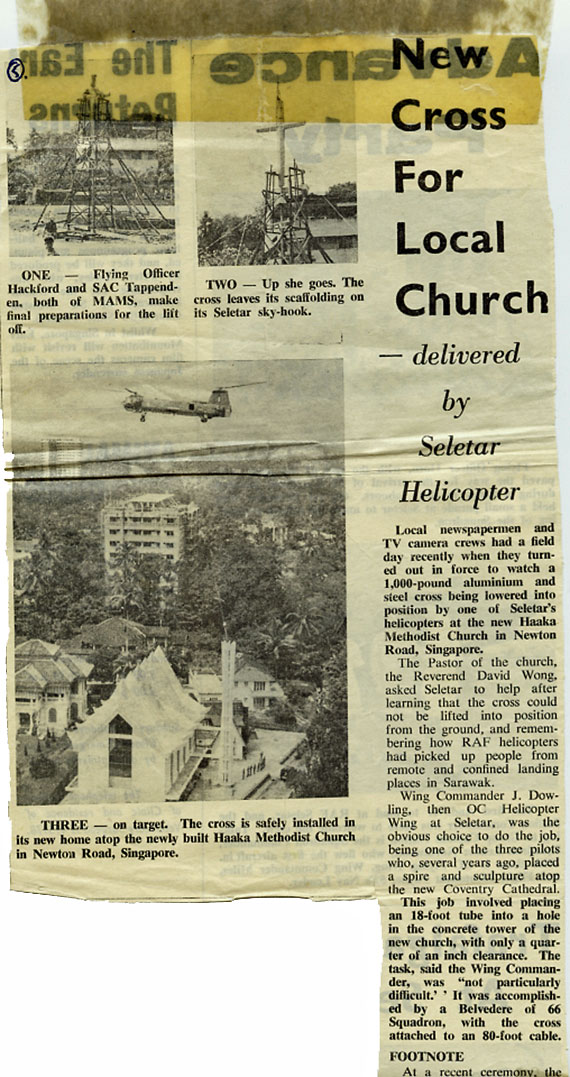
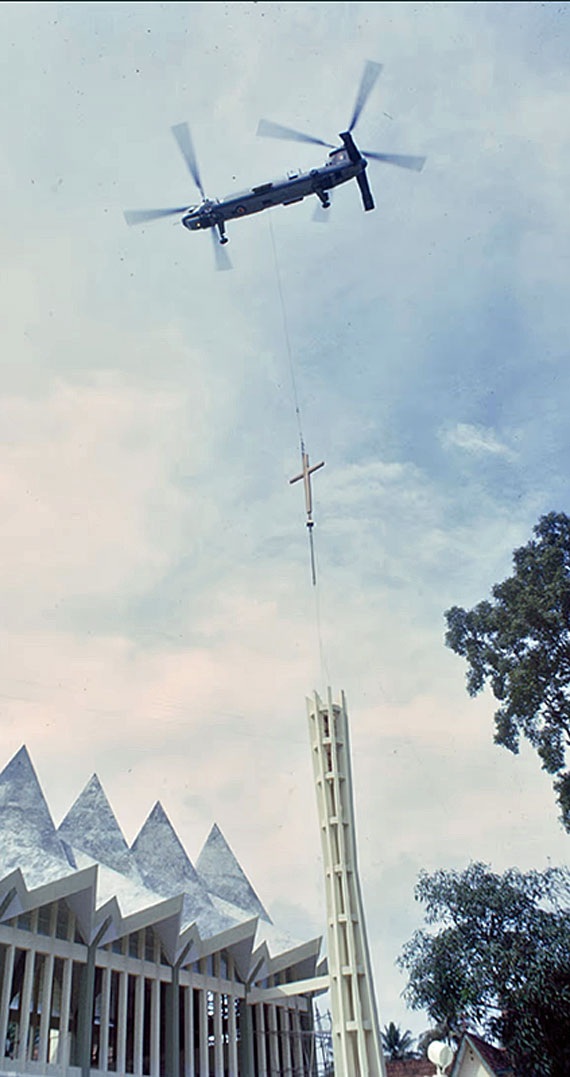
A Royal Air Force (RAF) helicopter, lowering and positioning the 1,000kg aluminium cross of the new Hakka Methodist Church in Newton. The precision exercise was undertaken by a Belvedere helicopter of the 66th Squadron, RAF Seletar on Dec 15, 1966.
As you can tell I was doing a lot of underslung loads. Another success was to rig a tractor trailer that was to be lifted into position by helicopter into RAF Western Hill, Penang. The trailer was designed never to "fly" but I managed to make sure the aero dynamics worked to ensure it "flew".
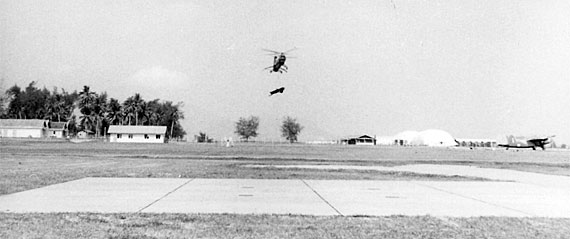
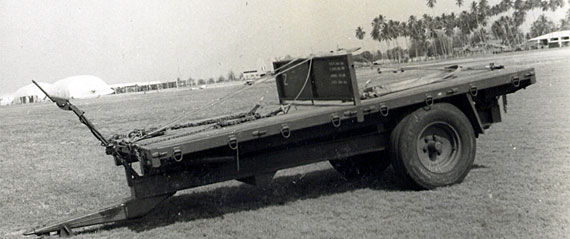
Best regards,
Barry
Barry

RAF Air Movers at RIAT
Our 1 Air Mobility Wing stand at The Royal International Air Tattoo has been showcasing the work of Movers in the Royal Air Force. Visitors have been learning and getting involved with cutting edge training and practical skills in the RAF Experience Zone.
From: Fred Hebb, Gold River, NS
Subject: My Most Satisfying Task
Hi Tony,
My most satisfying task I had was many years ago when we flew into Cayenne, Guiana, to pick up a school bus and deliver it to an interior destination with a very short gravel and grass runway. On arrival, we were met by the Ambassador of the country, he asked me how I was going to get it on the aircraft and I responded “I’m going to drive it on”.
He said, “Can you do that?”
Of course I said, “Just watch me!” Mind you, at that point I didn't know he was the Ambassador and not just some curious onlooker. I took a quick measurement of the height and underside clearance and with the guidance of the other Loadmaster, Lloyd Noteworthy, I drove it onto the aircraft.
Later that day, after a somewhat scary landing on that very short runway, we offloaded the bus; there was a bit of a reception of school children who apparently had never seen a school bus before. When the Ambassador got up to speak he mentioned that after the engineers did their calculations, their original plan was to load the bus onto a lowboy trailer and then drive it into the aircraft. They had built a gravel ramp at the destination as high as the ramp so it could be backed off. He then went on to say he saw me check the height and the center clearance and he was astonished when I said I could drive it on (I knew I needed 13 inches clearance beforehand after having checked the Hercules loading manual).
They put on a wonderful reception for us at the Embassy when we returned to Cayenne; the best rum I ever tasted!
Regards
Fred
Subject: My Most Satisfying Task
Hi Tony,
My most satisfying task I had was many years ago when we flew into Cayenne, Guiana, to pick up a school bus and deliver it to an interior destination with a very short gravel and grass runway. On arrival, we were met by the Ambassador of the country, he asked me how I was going to get it on the aircraft and I responded “I’m going to drive it on”.
He said, “Can you do that?”
Of course I said, “Just watch me!” Mind you, at that point I didn't know he was the Ambassador and not just some curious onlooker. I took a quick measurement of the height and underside clearance and with the guidance of the other Loadmaster, Lloyd Noteworthy, I drove it onto the aircraft.
Later that day, after a somewhat scary landing on that very short runway, we offloaded the bus; there was a bit of a reception of school children who apparently had never seen a school bus before. When the Ambassador got up to speak he mentioned that after the engineers did their calculations, their original plan was to load the bus onto a lowboy trailer and then drive it into the aircraft. They had built a gravel ramp at the destination as high as the ramp so it could be backed off. He then went on to say he saw me check the height and the center clearance and he was astonished when I said I could drive it on (I knew I needed 13 inches clearance beforehand after having checked the Hercules loading manual).
They put on a wonderful reception for us at the Embassy when we returned to Cayenne; the best rum I ever tasted!
Regards
Fred


The Supplier in the Royal Air Force (1967)

From: David Forsyth, St Hilaire de Riez
Subject: My Most Satisfying Task
Thank you, Tony, for yet another outstanding Newsletter.
Jim Nadin's amusing confession about confusing Lightning and Shackleton bits (OBB #063024) put me in mind of a similar episode. In Majunga, Madagascar, in the late 60s and early 70s, supply support for the never more than 2 Shackletons flying the Beira Patrol was mounted by St Mawgan; by my time, in 1971, the aircraft were from Ballykelly and then Honington.
Subject: My Most Satisfying Task
Thank you, Tony, for yet another outstanding Newsletter.
Jim Nadin's amusing confession about confusing Lightning and Shackleton bits (OBB #063024) put me in mind of a similar episode. In Majunga, Madagascar, in the late 60s and early 70s, supply support for the never more than 2 Shackletons flying the Beira Patrol was mounted by St Mawgan; by my time, in 1971, the aircraft were from Ballykelly and then Honington.

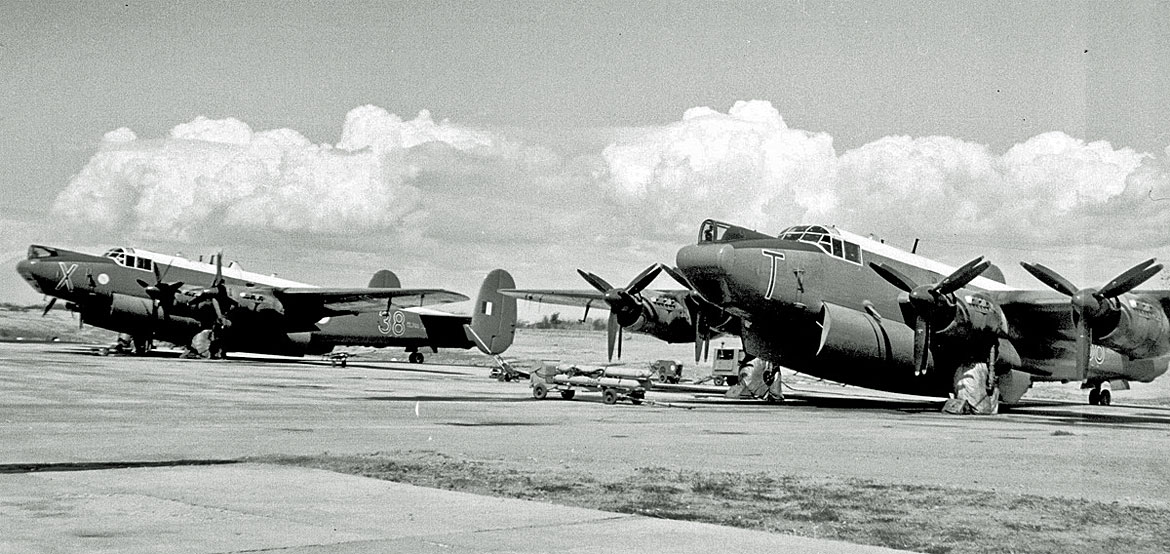
A pair of Shackletons at the Madagascar detachment
Loads of spares and the other paraphernalia to keep the detachment going were consolidated at either Brize Norton for Britannia schedules or Lyneham for C130 schedules, both of which were fortnightly. A logistics recipe for disaster, as readers will imagine. But, as that Irish comedian Jiminy Cricket used to say, "...and there's more!"
Demands from our Supply and Movements Flight were sent by signal (remember those?) in a pre-determined format. Then, like all the signals emanating from the Detachment, they were passed to the Commcen who transmitted the contents to a RN base in Mauritius. There, some RN ratings took each signal and transmitted the contents using Morse Code to somewhere in the UK, possibly Rudloe Manor or Stanbridge, memory fails, who then used the Morse information to input demands onto the then Supply Control Centre system which was located at and managed centrally by Hendon. St Mawgan now gained visibility of the information relating to Majunga demands and became responsible for ensuring they were met and items despatched to Brize or Lyneham.
To use a hackneyed phrase - you couldn't make it up – but somebody did. In fairness, the Detachment was only supposed to exist for a few months – but it dragged on for 6 years.
My small team (one Corporal Mover and one SAC Supplier), had received a demand from the engineer team for quantity 6 bolts in the 26 SH range, we'll say it was 26SH12345678. Demand was launched into the ether via the matelots at Mauritius. Several weeks and resupply flights went by and no sign of the demand being met. Not a high priority demand and no-one was much exercised about it.
Demands from our Supply and Movements Flight were sent by signal (remember those?) in a pre-determined format. Then, like all the signals emanating from the Detachment, they were passed to the Commcen who transmitted the contents to a RN base in Mauritius. There, some RN ratings took each signal and transmitted the contents using Morse Code to somewhere in the UK, possibly Rudloe Manor or Stanbridge, memory fails, who then used the Morse information to input demands onto the then Supply Control Centre system which was located at and managed centrally by Hendon. St Mawgan now gained visibility of the information relating to Majunga demands and became responsible for ensuring they were met and items despatched to Brize or Lyneham.
To use a hackneyed phrase - you couldn't make it up – but somebody did. In fairness, the Detachment was only supposed to exist for a few months – but it dragged on for 6 years.
My small team (one Corporal Mover and one SAC Supplier), had received a demand from the engineer team for quantity 6 bolts in the 26 SH range, we'll say it was 26SH12345678. Demand was launched into the ether via the matelots at Mauritius. Several weeks and resupply flights went by and no sign of the demand being met. Not a high priority demand and no-one was much exercised about it.
Then one late afternoon, a C130 came into long finals after 14 hours from Muharraq, disgorged its load of white-kneed passengers, and we set to, like good little Movers, to unload the incoming freight and re-load the aircraft whilst sorting out the Trim Sheet. Always a trial with no calculators and a max fuel load for a 14 hour leg back to Muharraq. And we always had to be quick about it as the aircraft had to take off in the early-morning cool. The Movements Corporal, Dave Stevens, press-ganged his chums into acting as Movers so we had MT fitters, Caterers, anyone who could not avoid his persuasive charm.
When I had time to take a quick look at the incoming freight, I realised there were 6 pristine, bright yellow Shackleton towing arms sitting on the tarmac. Observant readers will observe that I mentioned earlier two Shackletons. A quick check of the accompanying paperwork indicated the Demand Number we had raised for SH12345678 but these were, shall we say, 26SH12345687. We kept two of them, reloaded 4 onto the Herc and added two knackered ones for good measure, into the aircraft. I should here explain that the MoU between the MoD and its Malagasy equivalent stipulated the Detachment was to leave nothing behind – everything had to be airlifted out.
The subsequent checks revealed that St Mawgan had tasked 7 MU, RAF Quedgeley, to supply the items not realising that the Section Reference was for anything other than bolts. No-one at 7MU had queried the demand and they had manufactured the 6 towing arms – hence the long wait. Investigations failed to identify where the error had been introduced into the saga. We never heard anything more.
When I had time to take a quick look at the incoming freight, I realised there were 6 pristine, bright yellow Shackleton towing arms sitting on the tarmac. Observant readers will observe that I mentioned earlier two Shackletons. A quick check of the accompanying paperwork indicated the Demand Number we had raised for SH12345678 but these were, shall we say, 26SH12345687. We kept two of them, reloaded 4 onto the Herc and added two knackered ones for good measure, into the aircraft. I should here explain that the MoU between the MoD and its Malagasy equivalent stipulated the Detachment was to leave nothing behind – everything had to be airlifted out.
The subsequent checks revealed that St Mawgan had tasked 7 MU, RAF Quedgeley, to supply the items not realising that the Section Reference was for anything other than bolts. No-one at 7MU had queried the demand and they had manufactured the 6 towing arms – hence the long wait. Investigations failed to identify where the error had been introduced into the saga. We never heard anything more.
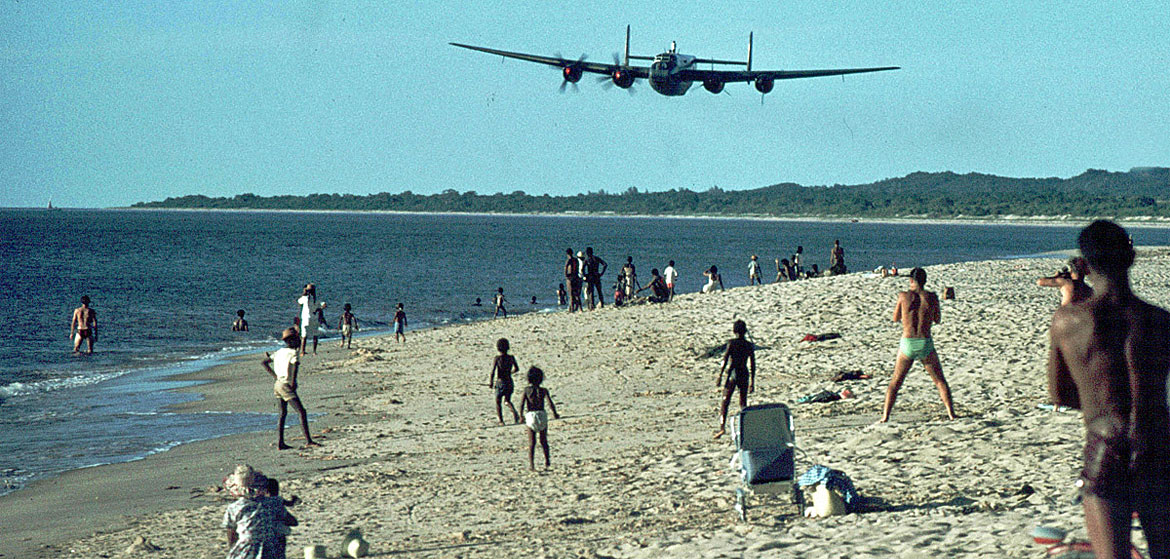
38 Squadron practicing low flying skills, note both port engines feathered! - Photo taken at Majunga in Madagascar in 1966
As an aside... regarding the photo above, one of my chums from Cranwell, Teddy, was the Co-Pilot with Bill Holdworth as Captain - very old and over-bold, according to my chum. He tells of an occasion at ultra low level of applying power to gain height. Bill was livid and asked why. Teddy's answer that they were below briefed minimum height was not popular but Bill could say nothing as Teddy was in the right.
Back to the task in-hand... The clock, however, was to turn full circle. Twenty-two years later I had the honour and privilege of becoming the Station Commander at Quedgeley. Whilst Comms had by then improved immeasurably, during the inevitable CO's Inspections, I always kept a beady eye out for any Shackleton Towing Arms which might be lurking in some little-visited corner. Never found any.
Cheers and thanks for all your efforts.
As Aye
David
Back to the task in-hand... The clock, however, was to turn full circle. Twenty-two years later I had the honour and privilege of becoming the Station Commander at Quedgeley. Whilst Comms had by then improved immeasurably, during the inevitable CO's Inspections, I always kept a beady eye out for any Shackleton Towing Arms which might be lurking in some little-visited corner. Never found any.
Cheers and thanks for all your efforts.
As Aye
David

Did you know that there were this many Shackleton squadrons?
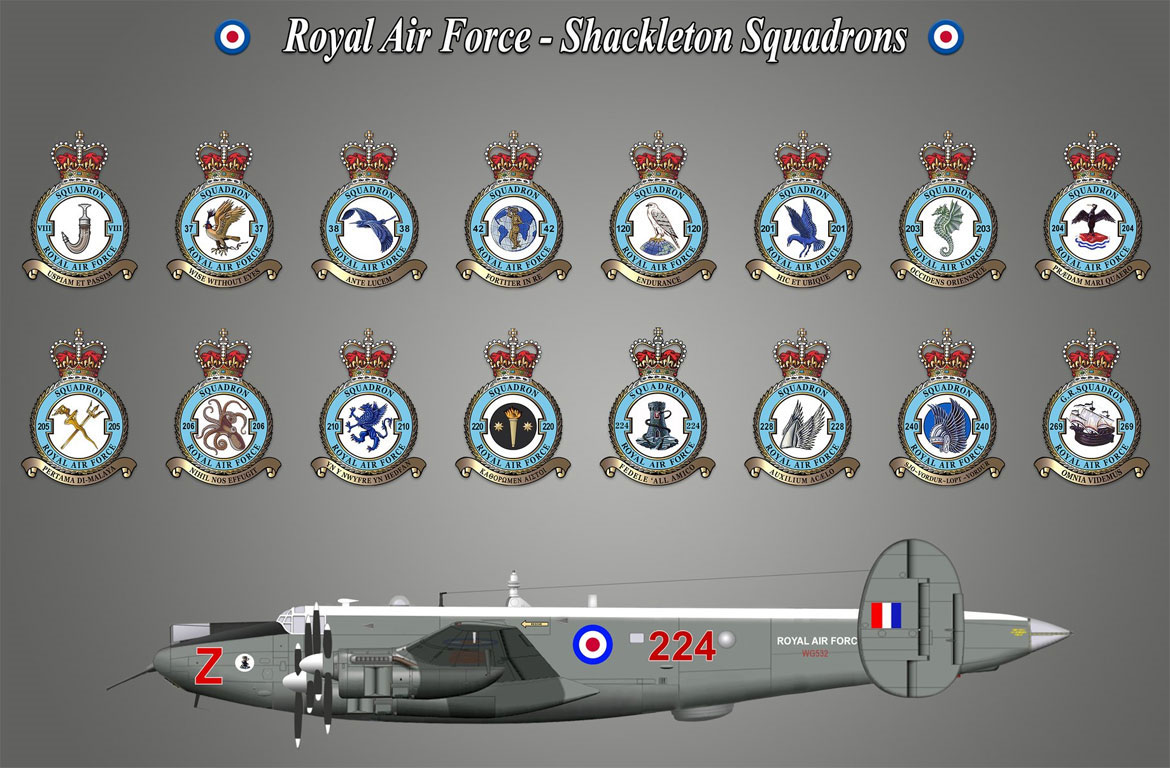

From: Tim Richardson, Tadworth, Surrey
Subject: Just a thought…
Hi Tony,
Just a thought, it’s 50 years since the Turkish invasion of Cyprus in 1974. I don’t think there was a Mover, both here or on the island, who was not involved. I certainly was!
Regards
Tim
Subject: Just a thought…
Hi Tony,
Just a thought, it’s 50 years since the Turkish invasion of Cyprus in 1974. I don’t think there was a Mover, both here or on the island, who was not involved. I certainly was!
Regards
Tim

From: Tony Gale, Gatineau, QC
Subject: Operation Ablaut - following the Turkish invasion of Cyprus
Greetings All,
I recall at the time of the Turkish Invasion of Cyprus, I was working in Movements Operations (RAF) at MoD in Whitehall. We had been working for over 24 hours arranging the evacuation of British dependants when the Prime Minister (Harold Wilson) told us to double the size of the airlift. Anyway, earlier that morning, 2 or 3 o'clock, we had made the arrangements to make Archbishop Makarios (the first president of Cyprus), "disappear". We had a helicopter bring him from Nicosia to Akrotiri where an Argosy was standing by to take him to Luqa in Malta - all the arrangements worked out just fine and he was summarily vanished, literally, into thin air.
At lunchtime that same day, I headed off to Garvey's, a favourite sandwich spot, and the newspaper boys on the street corners were displaying headlines that read "Makarios Kidnapped! Whereabouts Unknown!" I had to bite my tongue - in my mind I was screaming 'I know where he is!'
We had a closed circuit television connection with all of the major Ops rooms throughout MoD, and several times a day we would tune in for "Prayers". The Prime Minister was on too - only in voice though, there was no image from Number 10. We would also get situation reports over the same system - showing the different lines of battle and explaining who was shooting who etc. My boss, Squadron Leader John Wilkinson, had a villa on Cyprus, and so he would very carefully follow the daily reports, watching the front line creep towards his villa. One morning it had happened - his home away from home was well and truly located in enemy territory - he was devastated! About an hour later, there was a report over the system that a donkey was walking down the beach with what appeared to be a grand piano on its back. John Wilkinson screamed, "That's my bloody piano!"
All of us in the Ops room just laughed so damn hard - we had tears in our eyes! As a footnote, I never did find out if the report of the donkey was factual or just a set-up.
Tony
Subject: Operation Ablaut - following the Turkish invasion of Cyprus
Greetings All,
I recall at the time of the Turkish Invasion of Cyprus, I was working in Movements Operations (RAF) at MoD in Whitehall. We had been working for over 24 hours arranging the evacuation of British dependants when the Prime Minister (Harold Wilson) told us to double the size of the airlift. Anyway, earlier that morning, 2 or 3 o'clock, we had made the arrangements to make Archbishop Makarios (the first president of Cyprus), "disappear". We had a helicopter bring him from Nicosia to Akrotiri where an Argosy was standing by to take him to Luqa in Malta - all the arrangements worked out just fine and he was summarily vanished, literally, into thin air.
At lunchtime that same day, I headed off to Garvey's, a favourite sandwich spot, and the newspaper boys on the street corners were displaying headlines that read "Makarios Kidnapped! Whereabouts Unknown!" I had to bite my tongue - in my mind I was screaming 'I know where he is!'
We had a closed circuit television connection with all of the major Ops rooms throughout MoD, and several times a day we would tune in for "Prayers". The Prime Minister was on too - only in voice though, there was no image from Number 10. We would also get situation reports over the same system - showing the different lines of battle and explaining who was shooting who etc. My boss, Squadron Leader John Wilkinson, had a villa on Cyprus, and so he would very carefully follow the daily reports, watching the front line creep towards his villa. One morning it had happened - his home away from home was well and truly located in enemy territory - he was devastated! About an hour later, there was a report over the system that a donkey was walking down the beach with what appeared to be a grand piano on its back. John Wilkinson screamed, "That's my bloody piano!"
All of us in the Ops room just laughed so damn hard - we had tears in our eyes! As a footnote, I never did find out if the report of the donkey was factual or just a set-up.
Tony


Nicosia Airport: A rare glimpse inside the abandoned 1974 battleground

From: Tony Street, Fort Erie, ON
Subject: My Most Satisfying Task
Hi Tony,
Many years ago, more than I like to remember, I led a crew to Portugal where we trained their Army and Air Force in all aspects of Aerial Delivery (Including LAPES), from their new C130s. We had a hangar to ourselves full of equipment and classrooms. This, at the time, was my finest moment as at the end of training, we put on an Aerial Delivery show for their annual Air Force Day. A huge success!
About six months later I was on business in Portugal and had a couple of days to spare. On a whim, I decided to drive a couple of hours up to the Air Force base. Checking at the gate, I asked who the base commander was, it was the same chap, Gen Costa. I was taken to HQ and met with him over a coffee. At one point, he checked his watch and said, “Let's go and see something interesting.” In his staff car, we were driven to the same hangar where the first Aerial Delivery course, of 20 troops, was graduating. The officer in charge was Captain Oliveira, who was the original course leader.
This is where I must be humble. In short, I was introduced to all attending as the guy who started all this. I was then asked to inspect the troops and asked to say a few words; I did.
Then we all went to the base all-ranks club where the beer flowed freely. As this was a celebration, families were invited.
I spent the night in the visiting officers' accommodation rooms.
Best regards,
Tony
Subject: My Most Satisfying Task
Hi Tony,
Many years ago, more than I like to remember, I led a crew to Portugal where we trained their Army and Air Force in all aspects of Aerial Delivery (Including LAPES), from their new C130s. We had a hangar to ourselves full of equipment and classrooms. This, at the time, was my finest moment as at the end of training, we put on an Aerial Delivery show for their annual Air Force Day. A huge success!
About six months later I was on business in Portugal and had a couple of days to spare. On a whim, I decided to drive a couple of hours up to the Air Force base. Checking at the gate, I asked who the base commander was, it was the same chap, Gen Costa. I was taken to HQ and met with him over a coffee. At one point, he checked his watch and said, “Let's go and see something interesting.” In his staff car, we were driven to the same hangar where the first Aerial Delivery course, of 20 troops, was graduating. The officer in charge was Captain Oliveira, who was the original course leader.
This is where I must be humble. In short, I was introduced to all attending as the guy who started all this. I was then asked to inspect the troops and asked to say a few words; I did.
Then we all went to the base all-ranks club where the beer flowed freely. As this was a celebration, families were invited.
I spent the night in the visiting officers' accommodation rooms.
Best regards,
Tony


'Big Bev' fuselage heads to Solway Aviation Museum
The only surviving Blackburn Beverley is in the process of being dismantled in Hull and moved to its new home at the Solway Aviation Museum in Carlisle, Cumbria. Known as Big Bev, the aeroplane was once the biggest transport aircraft used by the RAF.
Dougie Kerr, from the museum, said lorries transporting sections of the plane had been on the roads all week, but work to move the wings was still to take place. He said the wings had be to narrowed down to fit on wagons but was hopeful they would be moving to Carlisle within a week.
The fuselage of the aeroplane was so big it could not fit through the gates at Fort Paull in Hull, where it was previously housed. A crane had to be used to lift it over the walls before it could be transported to Carlisle.
However, it could still be some time before Big Bev goes on display at the Solway Aviation Museum. Mr Kerr said it needed to be repainted and assembled, adding, "It's going to be next year before it gets put back together."
bbc.com
Dougie Kerr, from the museum, said lorries transporting sections of the plane had been on the roads all week, but work to move the wings was still to take place. He said the wings had be to narrowed down to fit on wagons but was hopeful they would be moving to Carlisle within a week.
The fuselage of the aeroplane was so big it could not fit through the gates at Fort Paull in Hull, where it was previously housed. A crane had to be used to lift it over the walls before it could be transported to Carlisle.
However, it could still be some time before Big Bev goes on display at the Solway Aviation Museum. Mr Kerr said it needed to be repainted and assembled, adding, "It's going to be next year before it gets put back together."
bbc.com
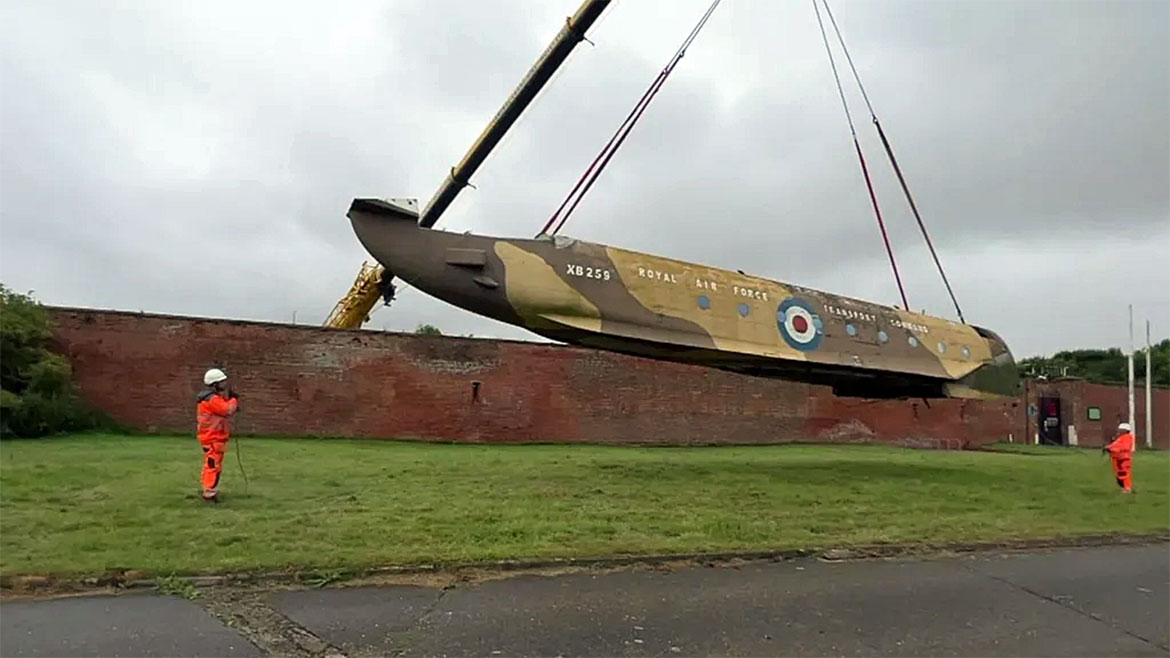

From: Colin Eyre, Bridgend, Glamorgan
Subject: My Most Satisfying Task
Hi Tony,
Have tried hard but could not come up with one satisfying task. I can however say that my whole time with UKMAMS really was overall satisfying.
There were tasks where it was cold, wet or extremely hot but none of that mattered when measured against the places we managed to see. I was lucky enough to have been to the USA where I got to see San Francisco, Hawaii, Wake and Guam. In Canada I got to pass through Gander on ten different occasions (only 4 night stops though).
In Africa it was Addis Ababa, Accra, and I could never forget the game parks in Kenya where we saw Elephants mating on the side of the road as we drove from Nairobi to Mombasa. In India it was Goa. I recently saw a film called “The Sea Wolves” where they showed the ferry that we went on in our taxi when travelling from Dabolim to Panjim. The sights in Singapore had to be seen to be believed. Then we had Darwin in Australia; for some reason this was the hottest place I had been to. There were of course a number of other places like Belize, Nassau and many places in Europe.
Lots of memories.
Rgds, Colin
Subject: My Most Satisfying Task
Hi Tony,
Have tried hard but could not come up with one satisfying task. I can however say that my whole time with UKMAMS really was overall satisfying.
There were tasks where it was cold, wet or extremely hot but none of that mattered when measured against the places we managed to see. I was lucky enough to have been to the USA where I got to see San Francisco, Hawaii, Wake and Guam. In Canada I got to pass through Gander on ten different occasions (only 4 night stops though).
In Africa it was Addis Ababa, Accra, and I could never forget the game parks in Kenya where we saw Elephants mating on the side of the road as we drove from Nairobi to Mombasa. In India it was Goa. I recently saw a film called “The Sea Wolves” where they showed the ferry that we went on in our taxi when travelling from Dabolim to Panjim. The sights in Singapore had to be seen to be believed. Then we had Darwin in Australia; for some reason this was the hottest place I had been to. There were of course a number of other places like Belize, Nassau and many places in Europe.
Lots of memories.
Rgds, Colin


Resupply right on target
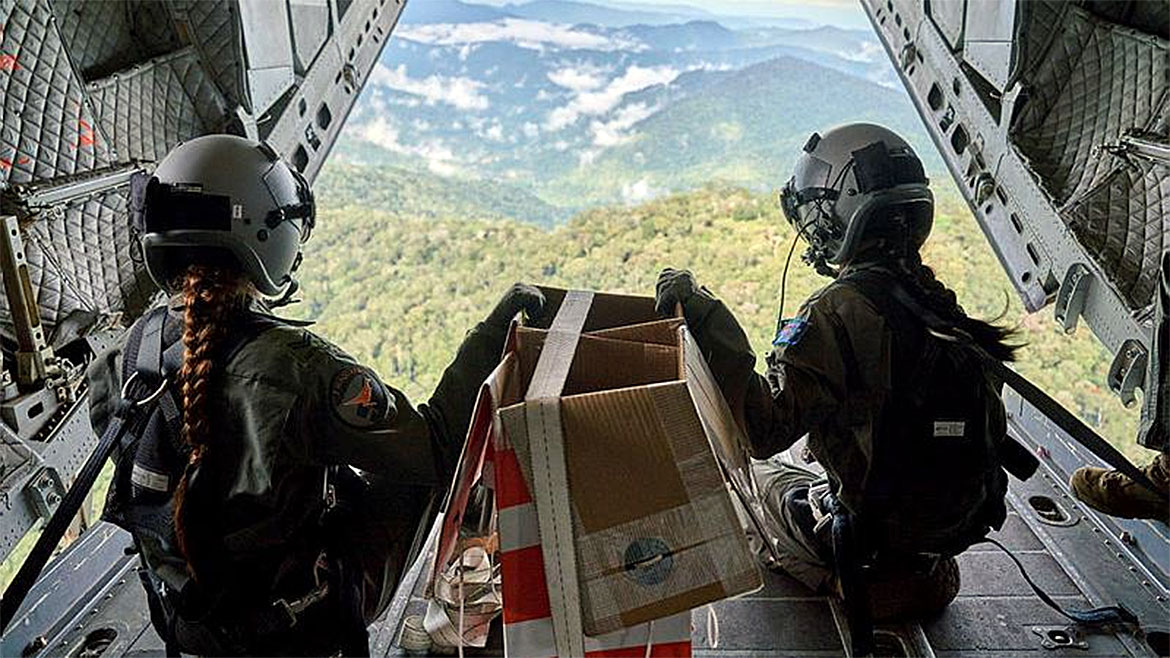
Corporal Monique Jeynes and Corporal Amanda Wintle on the ramp of a RAAF C-27J Spartan prepare to airdrop supplies over the Kokoda Track, Papua New Guinea, as part of the Defence Pacific Air Program.
Though target practice is usually the preserve of Air Force's fast jet squadrons, for members of 35 Squadron a recent resupply called back to the squadron’s missions in World War 2 during the fight for Papua New Guinea.
During their 2024 deployment to Papua New Guinea as part of Defence Pacific Air Program, the crew of the Spartan C-27J tactical airlift platform was tasked with supplying Australian forces on the Kokoda Track. Rather than supplying troops in contact with the enemy, this supply run was for ADF members completing the trek in honour of those who fought on the unforgiving terrain over 80 years ago. Tasked with resupplying the trekkers but with no usable airstrip in range, the squadron saw an opportunity to implement a resupply from the air – proving the capability of Air Force to airdrop supplies when needed, as well as ensuring currency and qualification for the pilots in both mountainous operations and contingency air drop (CONAD).
Detachment commander Flight Lieutenant James Champness said CONAD is one of many capabilities of the C-27J. “This was an example of how 35 Squadron, building from our knowledge and experience operating within the mountains of Papua New Guinea, can effect an airdrop to an unsurveyed drop zone 5000ft up in the mountains,” Flight Lieutenant Champness said. “Whether it’s the ops team planning the broader schedules and timings, or the movers organising the load, or finally the pilots and loadmasters who thread the needle on time and on target, everyone plays a crucial role in getting the supplies where they need to be, intact.”
For Warrant Officer Steven Burrows (known affectionally by the crew as ‘Rabbit’), his third rotation has seen a marked increase in the interest surrounding DPAP since his first trip in 2023. “Even though it’s less than a year later, the changes are massive. The response we’ve had from the program has been really positive, and it’s a fantastic opportunity to train our aviators,” Warrant Officer Burrows said. “Airdrops are always equal parts fun and challenging – from lining up the approach, ensuring the drop zone is correctly identified and clear, and then coordinating the precise speed, altitude, and timing in order to drop on target, there’s a lot of precision required to get it right.”
As for Rabbit’s assessment of the drop?
“Bullseye.”
defence.gov.au
During their 2024 deployment to Papua New Guinea as part of Defence Pacific Air Program, the crew of the Spartan C-27J tactical airlift platform was tasked with supplying Australian forces on the Kokoda Track. Rather than supplying troops in contact with the enemy, this supply run was for ADF members completing the trek in honour of those who fought on the unforgiving terrain over 80 years ago. Tasked with resupplying the trekkers but with no usable airstrip in range, the squadron saw an opportunity to implement a resupply from the air – proving the capability of Air Force to airdrop supplies when needed, as well as ensuring currency and qualification for the pilots in both mountainous operations and contingency air drop (CONAD).
Detachment commander Flight Lieutenant James Champness said CONAD is one of many capabilities of the C-27J. “This was an example of how 35 Squadron, building from our knowledge and experience operating within the mountains of Papua New Guinea, can effect an airdrop to an unsurveyed drop zone 5000ft up in the mountains,” Flight Lieutenant Champness said. “Whether it’s the ops team planning the broader schedules and timings, or the movers organising the load, or finally the pilots and loadmasters who thread the needle on time and on target, everyone plays a crucial role in getting the supplies where they need to be, intact.”
For Warrant Officer Steven Burrows (known affectionally by the crew as ‘Rabbit’), his third rotation has seen a marked increase in the interest surrounding DPAP since his first trip in 2023. “Even though it’s less than a year later, the changes are massive. The response we’ve had from the program has been really positive, and it’s a fantastic opportunity to train our aviators,” Warrant Officer Burrows said. “Airdrops are always equal parts fun and challenging – from lining up the approach, ensuring the drop zone is correctly identified and clear, and then coordinating the precise speed, altitude, and timing in order to drop on target, there’s a lot of precision required to get it right.”
As for Rabbit’s assessment of the drop?
“Bullseye.”
defence.gov.au

From: Harold Jones, Neston, Cheshire
Subject: My Most Satisfying Task
Greetings Tony,
I suppose that my most satisfying task was one I shared with you (I'll bet this gets published!).
As to the dates and details I can't remember, but it must have been a scratch team and involved a Hercules in roller configuration and the movement of the ruddy great slabs of steel sheet which were used to provide stable footings for the Harrier when on exercise.
The load had been finished and we were taxying out. We were sitting near the starboard para door when we noticed that the chunk of steel sheet we were resting our feet on was moving. Rather alarming!
We leaped into action and rapidly secured it, with thoughts of the Squadron reputation in mind and not wishing to be mentioned on the "Brickbats and Bouquets" board which [OC UKMAMS] Mike Slade had re-named from Jack Hobbs' "Pats and Kicks" board.
Keep up the good work and best wishes to all.
Harold (Harry) Jones
Subject: My Most Satisfying Task
Greetings Tony,
I suppose that my most satisfying task was one I shared with you (I'll bet this gets published!).
As to the dates and details I can't remember, but it must have been a scratch team and involved a Hercules in roller configuration and the movement of the ruddy great slabs of steel sheet which were used to provide stable footings for the Harrier when on exercise.
The load had been finished and we were taxying out. We were sitting near the starboard para door when we noticed that the chunk of steel sheet we were resting our feet on was moving. Rather alarming!
We leaped into action and rapidly secured it, with thoughts of the Squadron reputation in mind and not wishing to be mentioned on the "Brickbats and Bouquets" board which [OC UKMAMS] Mike Slade had re-named from Jack Hobbs' "Pats and Kicks" board.
Keep up the good work and best wishes to all.
Harold (Harry) Jones


A400M Atlas Low Level Mach Loop

A new member who has joined us recently:
Welcome to the OBA!
Colin Savill, Tuxford, Notts

RCAF CC-295 Kingfisher

Talk about shrinkage... Royal Air Force Stations in the UK as of 1988
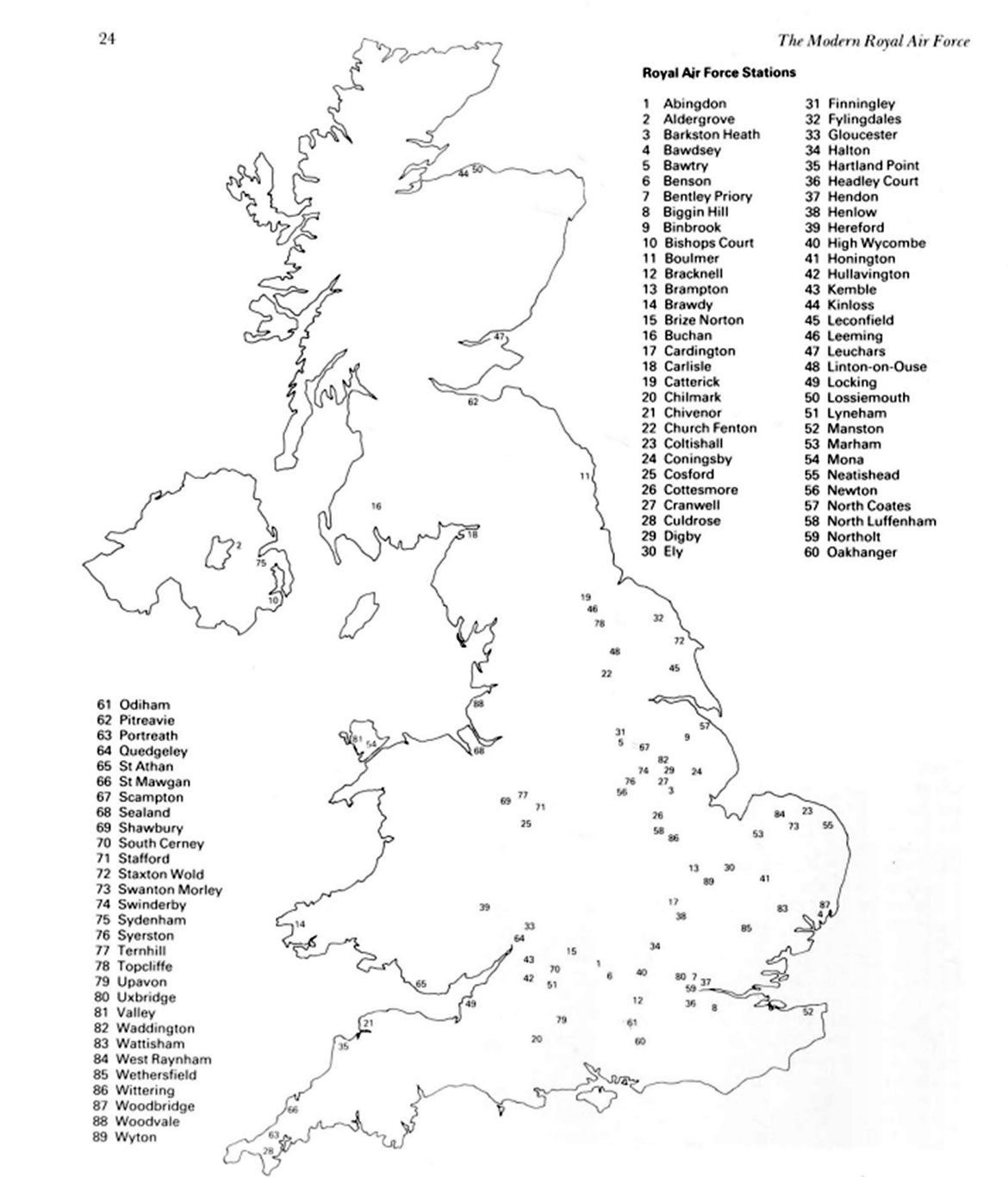
Tony Gale
ukmamsoba@gmail.com
ukmamsoba@gmail.com
This Newsletter is Dedicated
to the Memory of:
Debi, wife of Keith Telfer (RCAF)
to the Memory of:
Debi, wife of Keith Telfer (RCAF)


